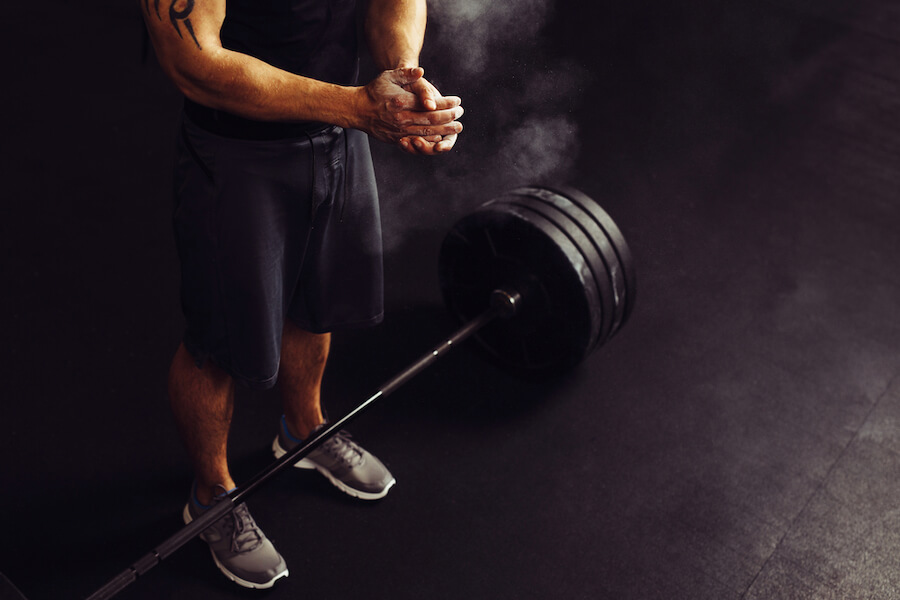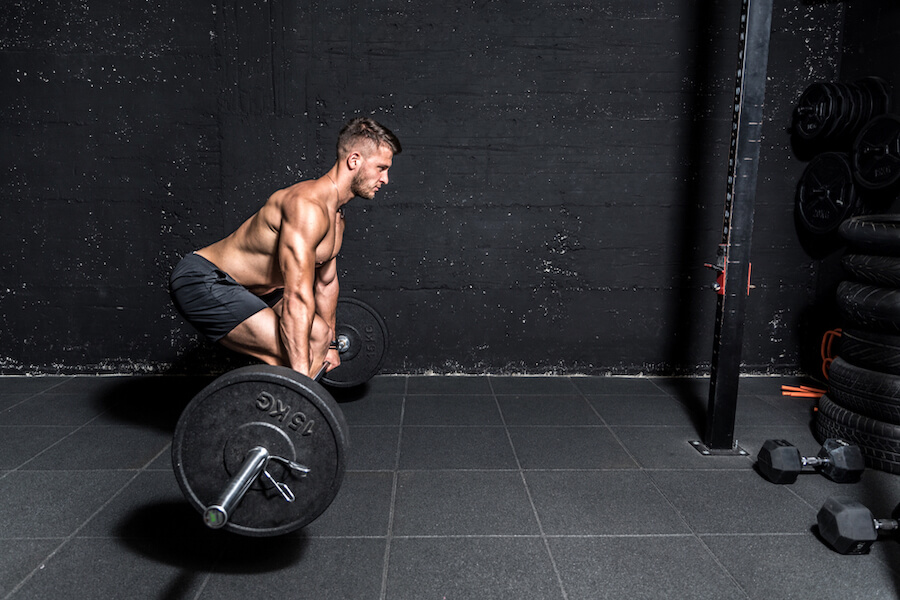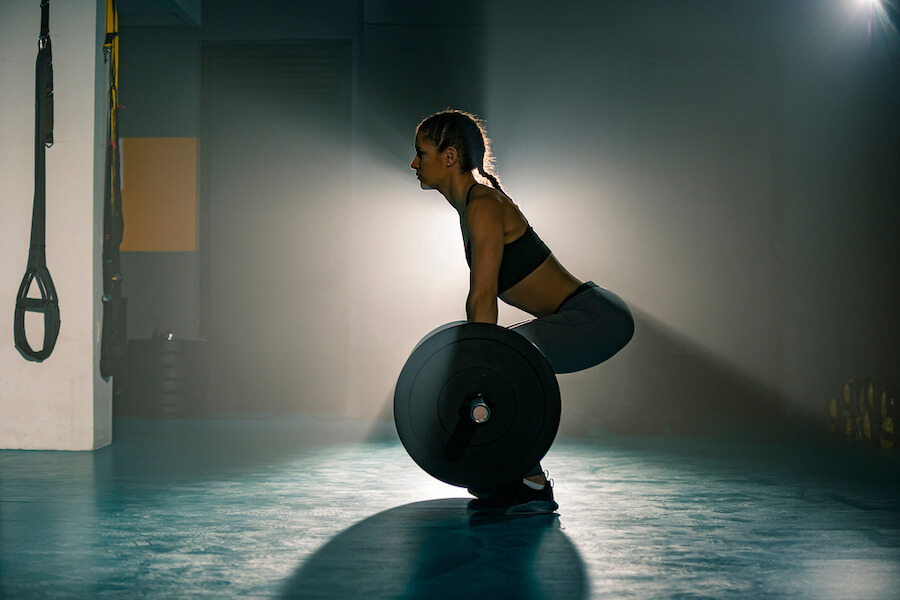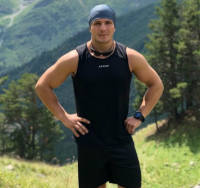The Romanian deadlift is a popular exercise to build muscle mass in specific body areas. It mainly involves muscles that are related to speed and jump power.
Hence, many people classify RDLs as a lower body exercise.

When doing RDLs, you are expected to feel it prominently in your hamstring, lower back, and glutes.
If you can feel RDLs in your hamstrings and not your glutes, you are probably doing something wrong during the exercise.
Here’s why you might feel RDLs in your hamstring and not glutes.
Errors You Might Be Making
Romanian deadlifts are very beneficial, especially for the back and lower region of the body. Like every exercise, RDLs have specific motions you must perform repeatedly.
If you make errors in your form or range of motion, you might feel RDLs in only some of the targeted muscles. Here are some mistakes you might be overlooking when doing RDLs.
Doing A Partial Range Of Motion
One of the primary things any fitness instructor will tell you is always to complete the range of motion for any exercise. This is a prevalent error among people doing RDLs.
If you want to feel your glutes and all the related muscles during the workout, you must always complete the range of motion for the exercise.
Doing a partial range of motion will only be a cheat, reducing the workout’s effectiveness. Many people neglect to complete the range of motion for various reasons.
Some want to keep their back straight or are too lazy to perform the full range of motion.
People perform RDLs from top to bottom, which helps to target the hamstrings and glutes well.
If you do a rep of Romanian deadlifts without feeling the impact on your hamstring and glutes, then you’re probably not completing the range of motion or taking a shortcut.
Taking shortcuts when working out is never effective.
If you do not have a waist-level rack where you can place the bar to start, you can begin the routine from a regular deadlift before proceeding with the RDLs from there.
It is crucial to complete the set of motions for RDLs. However, do not strain yourself in the process.
Perform the movement as safely as you can to avoid back injury.

Loading Lighter Weights
This is a widespread error many people make when doing Romanian deadlifts. Since many people don’t classify RDLs as a major exercise, they tend to reduce their weight.
This is not practical if you are after efficiency, and if the load is too small, you might not feel it well in your glutes.
The hamstring features fast-twitch muscles that respond incredibly well to heavy loads.
The heavier the load when performing Romanian deadlifts, the more you feel it in your glutes and hamstrings.
Hence, if you want to maximize your efficiency when doing RDLs, it is better to use the correct weight.
If you compromise on the load to carry, you will feel the impact of the RDLs on your glutes less than on your hamstrings.
This doesn’t mean the exercise is not working. It simply means you must carry a more significant weight when performing the full range of motion.
Wrong Technique
The technique is very critical when doing Romanian deadlifts. Individuals might not achieve the desired result if they don’t use the proper workout technique.
RDLs and regular deadlifts are very similar when it comes to technique. Hence, it is not particularly difficult if you know the right thing.
The difference in the technique of RDLs and conventional deadlifts is in the knee. When doing RDLs, you are required to keep your back and knees straight.
Keeping a back straight when going down is vital, as the motion must be effective. Move your pelvis backward so you feel it in your glutes when coming back up.
If you maintain the proper technique throughout the rep, you will feel the RDLs in your hamstring and glutes.
However, if you neglect to tilt your pelvis or keep your back straight, you might not feel the RDLs as effectively as you should.
Also, you must make sure the bar travels in a straight line when lifting.
Stationary Hips
Keeping your hips in place when doing RDLs is a wrong move.
It would be best to move your hips backward during the range of motion to feel the exercise in your glutes and hamstrings.
Keeping your hips stationary will affect your technique, and your form won’t be correct. If you make this error, you must remember to move your hips backward during each motion.
Once you start making the motion correctly, you will feel the RDLs more in your hamstrings and glutes.
It is easy to rectify this error. You must practice the range of motion without any weights to get used to it.
Pushing your hips to the back when doing RDLs also helps to make the exercise easier. If you move your hips to the back correctly, it helps to lower the bar.
Hence, you won’t have to use too much effort when dropping the bar. You should feel your hamstring and glutes tighten up after every rep you do.
How To Feel RDLs In Your Glutes And Hamstrings
It is a frequent occurrence for individuals to feel RDLs in their hamstrings and not glutes. Various things can lead to this, such as poor form, less load, and bad technique.
How can you perform RDLs correctly so you can feel it in your glutes and hamstrings? Here’s how to do RDLs properly.

- Place the load you want to carry on a barbell. It is advisable to pick a suitable weight and not a lighter one.
- Place the bar on a waist-level rack or start the rep like conventional deadlifts.
- Keep your legs at shoulder distance, and ensure your toes always point to the front. Make sure your leg almost touches the bar.
- Grab the bar handle with your arms vertically upright. Ensure your hands are right in front of your knees.
- Carry the loaded barbell like you want to perform a conventional deadlift. This is the starting position for RDLs.
- Breathe in and prepare your core for the range of motion.
- Bend your hips when you want to start the exercise. Do not bend your back.
- Push your butt backward until you can’t do so without overbending your knees.
- Slightly incline your knees and push your hips back till you feel the strain in your hamstrings and glutes.
- Ensure the barbell is as close to your body as possible, and maintain a flat back.
- Only go as far as your hamstrings tolerate
- Tighten your glutes and push your hips to the front when moving back up.
- Repeat as many times as desired.
Final Thoughts
RDLs are perfect for building your glutes, hamstrings, and lower back. It involves using weights and a range of motion to work out the muscles in the lower body.
Like every other workout exercise, you must perform RDLs with the proper technique and form to get the best effect.
Sometimes individuals only feel RDLs in their hamstring and not their glutes.
There can be several reasons for this. It could be that the person’s technique is wrong, or they only perform a partial set of motions.
Doing your reps correctly to feel RDLs in your glutes would be best.

I was working as a mountain guide, probably all around the planet. One day, I met my wife in the mountains, literally on top of the world. Now, I have a beautiful family and three kids, so I don’t have much time for climbing, but sometimes I go camping with my friends. I am also into gym workouts, and I can’t imagine my life without sports.
Since I ended my professional career as a climbing guide, I’ve been giving personal classes and helping amateurs to get ready for conquering their first peaks. Also, that’s how the whole blog idea appeared.





